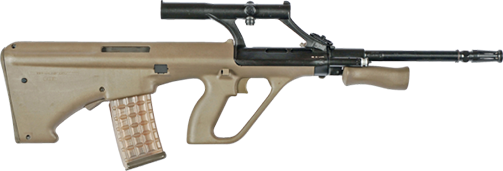The Upper Austrian city of Steyr traces its weaponry lineage back hundreds—if not thousands—of years. Historians believe that humans discovered iron on nearby Erzberg Mountain sometime during the Early Middle Ages, as far back as 1,300 years ago, leading to the development of blacksmithing in local industry. Steyr came to prominence as a producer of knives and armor under succeeding duchies and dynasties during the Holy Roman Empire before its smiths learned how to make muskets. By the end of the 16th Century, they were supplying flintlocks to the Hapsburg Imperial Army for its battles in the Thirty Years War.
Leopold Werndl was born in 1797 and began manufacturing weaponry parts as a young man. His son Josef left Steyr to study as a journeyman gunmaker in 1849, first in Vienna, Prague, and Bavaria then at the Remington and Colt factories in the United States. Josef returned home at 24 after his father died of cholera to run the family business with the technology he’d learned abroad.

Josef and his brother Franz built a new firearms factory and sawmill in 1864. Their novel breech-loading rifle with a turning block soon became the standard issue for the Austrian Army. By 1872, their 45,000 factory workers were turning out 622,000 per year. As weapons demand decreased in the 1880s, the ever-inventive Josef Werndl turned to the newly harnessed phenomenon known as electricity. He electrified his factory and the streetlights in Steyr, the first European city to do so. After Josef’s death in 1889, the town of Steyr built a towering statue in his honor.
Werndl wasn’t the only famous name to grace these firearms factories. Otto Schoenauer, Karl Holub, even automotive icon Ferdinand Porsche contributed to the braintrust and sophistication of the designs as they shot toward the 20th Century. But one particular name became inextricably linked, even synonymous with the brand.

Ferdinand Ritter von Mannlicher came to Steyr in 1887, destined to reshape the company and firearms technology forever. He invented or perfected clip-style magazines, rotary actions, straight-pull and turn-bolt actions, automatic rifles and pistols,and a number of rifle designs including the iconic Mannlicher-Schoenauer. Intended as a military rifle and carbine, the MS 1903 saw action in a number of armed conflicts around the world, but it was as a hunting tool that it truly shone. Popularized by safari hunters such as Phillip Percival and WDM “Karamojo” Bell, and writers Robert Ruark and Ernest Hemingway, the iconic full-stock design and signature 6.5×54 round killed animals from American pronghorn to African elephants before it finally sunset from production after 70 years.
Steyr unleashed its first assault rifle in 1958, followed by the first AUG in 1977. This “Universal Army Rifle” was quickly adopted by the Austrian Army and dozens of law enforcement agencies and militaries around the world. The unmistakable bullpup profile gained prominence for its light, simple, and reliable design, becoming a favorite of special forces commanders and Hollywood directors alike.

The latter half of the 20th century also saw major development’s in Steyr’s sporting and sniper rifles including the SSG 69, which quickly produced world-record target shooting distances. The company was among the first to use compound stocks in precision rifles and it pioneered locking bolt technology that made guns safer and more rugged.
Those advancements and others culminated in the Monobloc, the first-ever hunting rifle with its barrel and action housing machined from one contiguous block of steel. This monolithic design allows zero variance through the entire package, setting a new standard for precision, accuracy, and durability.

A century and a half in business, a millennium in the weapons trade. This town and its eponymous gunmaker advanced firearms technology from the medieval to the modern through a lineage no other can claim. Steyr continues to lead in a manner no other will.
We have 160 years of history. Now let’s make yours.
